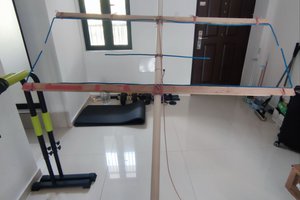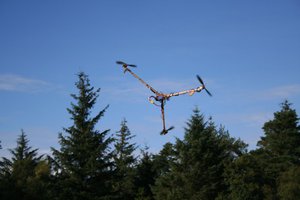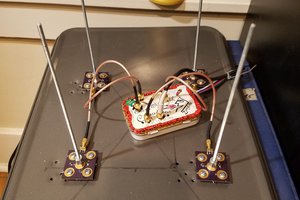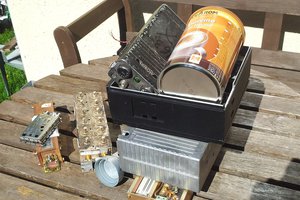The problem:
I have suffered for years with a poor ADSL connection being over 5km to my nearest exchange, and constantly had dropouts and irregular speeds between 1.5Mbps and 3Mbps. I used a Billion 7800N modem which has the Broadcom DSL chipset (the most tolerant to long lines) and the Billion could adjust a number of the ADSL settings which helped tweak the speed but you can' t beat physics so it was a constant battle of compromises between reliability and speed. With a family of three teenagers who love to stream music and movies you can imagine the frustrations with the internet connection. In Australia with long distances and sprawling suburbs it is fairly common to have marginal ADSL connection, and fibre / cable is only an option for some suburbs, not mine.
When my ISP Optus had a long line outage once they gave us a mobile wireless broadband hotspot to tide us over for a few days but being in a mobile phone blackspot I knew it wouldn't work well, and I only got a marginal connection and slow speeds with the hotspot only picking up a faint signal at one location in the house. So along with the high costs of wireless broadband in Australia with low data caps, it seemed wireless broadband wouldn't be an answer for me.
Recently a local wireless ISP VividWireless released a LTE broadband product with unlimited downloads at a reasonable price, the only Australian wireless ISP to do this (that I know of), which solves the issue of low data caps. And when I checked their site it showed that I wasn't in coverage range (not unexpected) but not too far away from their coverage edge. They used the Optus wireless network and have a local cell tower not too far away which I knew would get a signal albeit a poor one as my hotspot can just pick it up. They also limit the speed of the wireless connection to 10/1 Mbps which isn't fast for LTE however it goes a long way to not overloading the limited bandwidth of the cell tower - having unlimited downloads and fast LTE speeds at a good price is a recipe for a popular service especially in a suburb like mine where ADSL is marginal, making a wireless service attractive and quickly congested. So its good that this is a speed limited service - 10Mbps is 4x as fast as I typically get on ADSL and if it is more reliable then it may be an option if I can solve the reception issue.
Being a qualified (but not practicing) Electronics Engineer and remembering sitting through all those boring (and maths intensive) 4th year lectures about antenna theory and radar that I never got to use in practice I thought - why not have a go at trying my hand at a DIY antenna? So I took the plunge and bought the wireless modem and signed up to a month of the service - worst case I could resell the modem if I couldn't get it to work. Installing and setting up the wireless modem I had the same experience as the hotspot (as expected), barely working in only one spot in the house and very marginal (RSSI -91dBm), about 3Mbps with dropouts, likely worse when it rains. Spending a day trying different spots in the house did locate a place on the roof where it would receive -89dBm and if raised the modem high enough on that spot I got -83dBm which should be sufficient for a fast and reliable signal, and with a proper antenna I might even be able to get in the -70's.
Antenna options
Easiest option would be to buy an antenna however it seems the LTE frequency the ISP uses 2310 - 2400 Mhz isn't a popular one, adjacent to the 2.4Ghz wifi spectrum, but sufficiently different that an antenna designed for wifi wouldn't be as sensitive or effective as one specifically designed for the Optus / Vivid spectrum. There don't seem to be any antennas specifically designed for the 2300Mhz LTE band although there are a lot of wide bandwidth antennas that span this range, but I recall from my lectures on antenna theory that bandwidth and gain are a tradeoff so that large bandwidth wouldn't be high gain (even if advertised as such - seems lots of...
Read more »
 Jmzdd
Jmzdd
 Phil Handley
Phil Handley
 Martin
Martin
 2FTG
2FTG